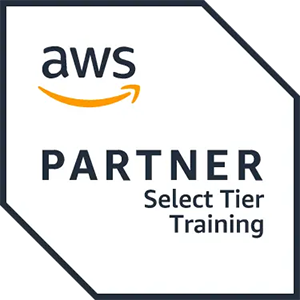Ota yhteyttä
Voit olla meihin yhteydessä ja tiedustella koulutuksistamme täydentämällä yhteystietosi ja koulutuksen nimen oheen.
 Kesto
Kesto 5 päivää
 Toimitus
Toimitus (Online ja paikan päällä)
 Hinta
HintaHinta pyydettäessä
When you complete this course, you’ll be able to:
- Demonstrate the fundamentals of Force.com code development
- Describe object-oriented programming concepts
- Evaluate general use cases where Force.com code is a good solution
- Consider basic Force.com code syntax, available data types, and potential use of each
- List the ways Force.com code can be invoked
- Compare and contrast the different types of collections
- Write SOQL for loops to handle bulk data
- Review execution order and where before and after triggers execute
- Test the different governor limits and contexts
- Create a unit test for a class using assertion methods
- Understand the requirements, steps, and tools available for deploying Force.com code
Introduction to Force.com Code
- Overview, including Force.com code in the salesforce.com stack, environment requirements, usage scenarios, the development lifecycle, execution methods, and salesforce.com objects and fields
- An introduction to object-oriented programming, classes, and objects
- Installation and development using the Force.com IDE
Force.com Building Blocks
- Classes, variables and methods, and data objects
- Data objects and relationships between objects
- Force.com code variables, data types, and expressions
- Best practices for formatting, commenting, and naming conventions
Force.com Code Class Construction
- Classes and objects, including passing and returning variables, encapsulation, conditions and logic flow control, loops, and exception handling
Force.com Triggers and Data
- Introduction to Force.com triggers, including when to use a trigger, order of execution, creation and development considerations, and governors and limitations
- An introduction to querying data with SOQL and SOSL
- Data Manipulation Language (DML)
Testing, Debugging, and Deployment
- Debugging scenarios, methods, and tools
- Test classes, unit testing, testing requirements and strategies, and considerations and best practices
- IDE testing and an overview of Salesforce CRM UI testing
- Deployment checklist and preparation steps
- Force.com IDE deployment
Introduction to Object-Oriented Programming with Force.com Code is designed for people who are familiar with the Salesforce application user interface and customizing applications using the Setup menu and who want to gain an understanding of object-oriented programming and develop basic Force.com code development skills.
Course participants should be familiar with the Salesforce UI and how to customize applications using the declarative capabilities.
When you complete this course, you’ll be able to:
- Demonstrate the fundamentals of Force.com code development
- Describe object-oriented programming concepts
- Evaluate general use cases where Force.com code is a good solution
- Consider basic Force.com code syntax, available data types, and potential use of each
- List the ways Force.com code can be invoked
- Compare and contrast the different types of collections
- Write SOQL for loops to handle bulk data
- Review execution order and where before and after triggers execute
- Test the different governor limits and contexts
- Create a unit test for a class using assertion methods
- Understand the requirements, steps, and tools available for deploying Force.com code
Introduction to Force.com Code
- Overview, including Force.com code in the salesforce.com stack, environment requirements, usage scenarios, the development lifecycle, execution methods, and salesforce.com objects and fields
- An introduction to object-oriented programming, classes, and objects
- Installation and development using the Force.com IDE
Force.com Building Blocks
- Classes, variables and methods, and data objects
- Data objects and relationships between objects
- Force.com code variables, data types, and expressions
- Best practices for formatting, commenting, and naming conventions
Force.com Code Class Construction
- Classes and objects, including passing and returning variables, encapsulation, conditions and logic flow control, loops, and exception handling
Force.com Triggers and Data
- Introduction to Force.com triggers, including when to use a trigger, order of execution, creation and development considerations, and governors and limitations
- An introduction to querying data with SOQL and SOSL
- Data Manipulation Language (DML)
Testing, Debugging, and Deployment
- Debugging scenarios, methods, and tools
- Test classes, unit testing, testing requirements and strategies, and considerations and best practices
- IDE testing and an overview of Salesforce CRM UI testing
- Deployment checklist and preparation steps
- Force.com IDE deployment
Introduction to Object-Oriented Programming with Force.com Code is designed for people who are familiar with the Salesforce application user interface and customizing applications using the Setup menu and who want to gain an understanding of object-oriented programming and develop basic Force.com code development skills.
Course participants should be familiar with the Salesforce UI and how to customize applications using the declarative capabilities.
- ` Päivämäärä pyynnöstä

 United Kingdom
United Kingdom Germany
Germany Denmark
Denmark Sweden
Sweden Italy
Italy Netherlands
Netherlands Norway
Norway 















